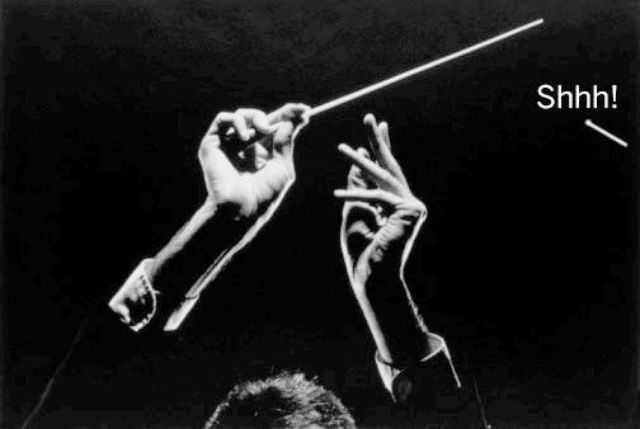You know the adage: classical music is elitist, going to a concert means you have to behave like you are in the church (or in a courthouse) and, as a consequence, it is getting harder and harder to engage new audiences. A little over a year ago, swiss conductor Baldur Brönnimann shared a list of changes that should be made in classical music concerts, which ranged from the musicians’ outfits to their repertoire, with the necessary mention of how to make children in the audience less unruly.
While all the ten elements of his list were quite well-argumented and we agree with most of them, we are open to discuss this evergreen topic with the community.
True. The audience should be free to applaud between movements
I second that. Think of how livelier the theatergoing experience was until Gustav Mahler imposed the habit of sitting silently till the end of the performance. I understand the annoyance at an applause mid-movement, but what would be wrong in applauding between movements, which are almost an entity in itself? Even on YouTube, though, old-school users think that such practice almost equals blasphemy: it’s quite easy to stumble upon the occasional insult directed to people who applaud, for example, after the third movement of the Pathetique or the first movement of the Eroica.
Agreed. Mobile phones should not be treated as a radioactive hazard
Experimental opera houses and ballet companies now allow the audience to record and photograph part of their performance so they can share the content on social media and tag the company or the single performers in said pictures and videos. Given how effective a platform like Instagram or Snapchat is in promoting artists and performers and in attracting new audiences, concert halls and opera houses had better follow a similar strategy, considering how much they bemoan that they are unable to attract younger crowds. Just turn the brightness down to reasonable levels.
Very important: Let us consider the kids!
Parents usually avoid taking their children to classical concerts or ballets–save for the Family tradition of The Nutcracker at Christmas– because they feel that the little ones would get bored too easily and, the horror the horror, would throw a tantrum mid-movement. This is a vicious circle though: avoid taking your kid to a concert hall and it will be more and more difficult for them to come to appreciate such experience. More concert halls could follow Leonard Bernstein’s footsteps and create something similar to the Young People’s Concerts, which, even though they were televised, drew an entire generation of youths to classical music between 1958 and 1969
What about technology?
We are getting there, considering how the L.A. Philharmonic is pioneering VR technologies in combination with their concerts, allowing a 360-degree view of the performance.
Yes. Let’s talk fashion
While tail suits and full-length gowns (or anything as formal) give performers a solemn demeanor–after all, they are presenting a grand work in an elegant setting– we would love to see a little bit of variety, whether it be a seasonal change or a period-influenced variations: baroque garbs for Bach and 1920s-inspired looks for Berg, Stravinsky, and Schoenberg. We do need to draw a line, though, otherwise, it won’t be long before we see an orchestra perform wearing yoga pants, crop top and ripped jeans.
Thankfully, artists are engaging more and more with the audience
And we have to–partially, at least–thank social media for that. Musicians such as Itzhak Perlman, for instance, have a very active Facebook community.
Maybe it would not be a bad idea to allow drinks inside a concert hall.
Having to empty your cup during intermission feels like an outdated imposition, and we can all concur that audience members are not animals who will slurp their drinks or spill them on the floor. Of course, though, there is a flip side to that: not all concert halls can have cup holders installed next to every seat.
Make concerts less predictable
Fair point, but the majority of the audience might not be familiar with pieces that veer too far from the warhorse repertoire that made them fall in love with classical music. So, a more creative approach might be more beneficial than a selection of works that only a few cognoscenti will be familiar with.
Every program should contain a contemporary piece. Why?
Why is that so? First, a contemporary piece might not fit the program itself. Second, if every program is really bound to contain a contemporary piece, then we are back to square one in the predictability game.
No, the orchestra should not tune backstage. Let’s keep that practice on the main stage
It is one of the most heartwarming moments in a concert to watch the orchestra tune the instruments, a little bit of atonal chaos before the mathematical order of music sets in. Also, Reddit user misnomer1, a professional violinist, opposes that practice, arguing that cold backstages sometimes equal blazing hot stages, which equals “many tears.” “Because an orchestra tunes to the oboe’s A, what you tuned to may not quite be what the oboe plays (though in theory, it should be; blame acoustics, not me),” he explained on Reddit.

